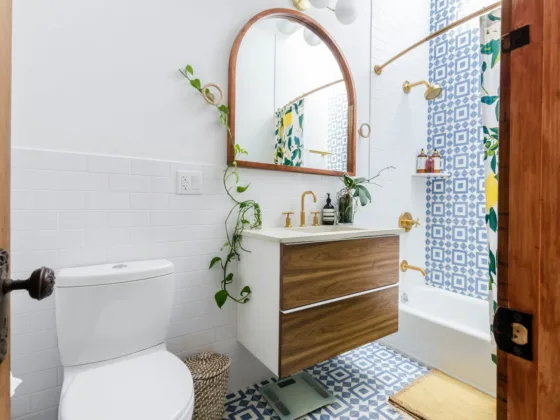Table of Contents Show
Finding ways to ventilate a windowless room might seem like a challenge, but it’s not impossible. Proper air circulation isn’t just about comfort—it’s about creating a healthier living space. Poor ventilation can lead to stale air, odors, and even health issues over time. Thankfully, there are practical solutions to keep air moving even in rooms devoid of windows.
Understanding the Challenges of Windowless Rooms
The Effects of Poor Air Circulation
A room without windows often becomes a breeding ground for stagnation. Without ventilation, moisture can build up, encouraging the growth of mold and mildew. This not only causes an unpleasant smell but can also aggravate respiratory issues like allergies or asthma. Additionally, stale air makes it harder for oxygen levels to stay balanced, leaving the room feeling stuffy and oppressive.
Why Traditional Solutions May Not Apply
For rooms with windows, a quick fix like opening a window would improve ventilation. But in a windowless space, you’re working without this luxury. Relying solely on techniques like natural cross-ventilation isn’t an option, so you have to turn to creative and deliberate strategies to ensure proper airflow.
Effective Methods to Improve Air Circulation in Windowless Rooms
Using Fans Strategically
Fans are a lifesaver when it comes to improving airflow. Pedestal or floor-standing fans can push air around the room, while oscillating fans distribute it more evenly. For even better results, install a ceiling fan to circulate air at a higher level. You could also use exhaust fans to expel stale air—these fans are excellent for pulling out humidity and odors, especially in bathrooms or kitchen-style spaces.
For more details on how fans can be used, you can explore this guide on ventilation without windows.
Installing Ventilation Systems
Wall-mounted exhaust fans or ductless ventilation systems allow air exchange even in completely sealed spaces. These systems draw out warm or stale air while replacing it with fresher air. They’re particularly effective if you’re considering a more permanent solution.
River Valley AC explains how exhaust systems can make a significant difference in windowless spaces.
Leveraging Dehumidifiers
Often, a lot of discomfort comes from moisture in the air. Dehumidifiers not only reduce humidity levels but also assist in overall air movement. They’re compact and easy to use—perfect for small rooms that need all the help they can get in staying fresh and dry.
Creating Airflow Between Rooms
Sometimes, the best way to improve ventilation in a windowless room is to connect it to an adjacent area. Consider options like leaving doors open, integrating door grilles, or even adding a temporary duct system. These steps allow air from a larger, ventilated area to circulate into the windowless room.
A helpful suggestion from this Reddit thread shows how simple door adjustments combined with fans can make noticeable improvements.
Low-Tech Solutions for Temporary Relief
Using Fans with Ice or Water
This old trick is a favorite for a reason. Place a bowl of ice or a container of cool water in front of a fan. As the airflow passes over the ice, it creates a cooling breeze that can make the room feel fresher, giving you a quick and affordable sense of relief during hot days.
Positioning Air-Purifying Plants
Plants like peace lilies, snake plants, or even a pothos thrive in low light and can help improve air quality by absorbing toxins. Plus, they add a simple, natural aesthetic to the room. While they don’t replace other ventilation methods, their contribution to cleaner air makes them a great addition to any windowless space.
Preventing Stale Air and Maintaining Air Quality
Replacing Incandescent Lights
Traditional light bulbs produce a surprising amount of heat. By switching to LED lights, you not only save energy but also reduce the heat level in the room, lessening the chance of the air becoming stuffy.
Incorporating Scented Solutions
Candles, essential oil diffusers, or even strategically placed air fresheners can mask musty odors. While these don’t solve the deeper problem of poor air circulation, they can make the space more pleasant while you work on other solutions.
For additional creative strategies, check out Toms Guide on room ventilation.
Conclusion
Windowless rooms don’t have to feel like caves. Combining solutions such as fans, dehumidifiers, and ventilation systems can improve air circulation and create a more comfortable environment. Even low-tech fixes, like using ice with fans or adding air-purifying plants, can make a big impact.
Try these methods to transform your space into a fresher, healthier place to live or work. Remember, good airflow isn’t just a luxury—it’s a necessity for maintaining both health and comfort.
FAQs
You can improve air circulation by using fans strategically, installing ventilation systems, leveraging dehumidifiers, and creating airflow between adjacent rooms.
Pedestal or floor-standing fans are great for pushing air around, while oscillating fans distribute it evenly. A ceiling fan can also be effective for circulating air at a higher level.
Yes! Plants like peace lilies, snake plants, and pothos thrive in low light and can help improve air quality by absorbing toxins, making them a great addition to any windowless space.
A simple trick is to place a bowl of ice or a container of cool water in front of a fan.As the air passes over the ice, it creates a refreshing breeze.
To prevent stale air, consider replacing incandescent light bulbs with LED lights to reduce heat, using scented solutions like candles or essential oils, and ensuring proper ventilation with fans or systems.
Yes! You can improve ventilation by leaving doors open, integrating door grilles, or adding a temporary duct system to allow air from a larger, ventilated area to circulate into the windowless room.








